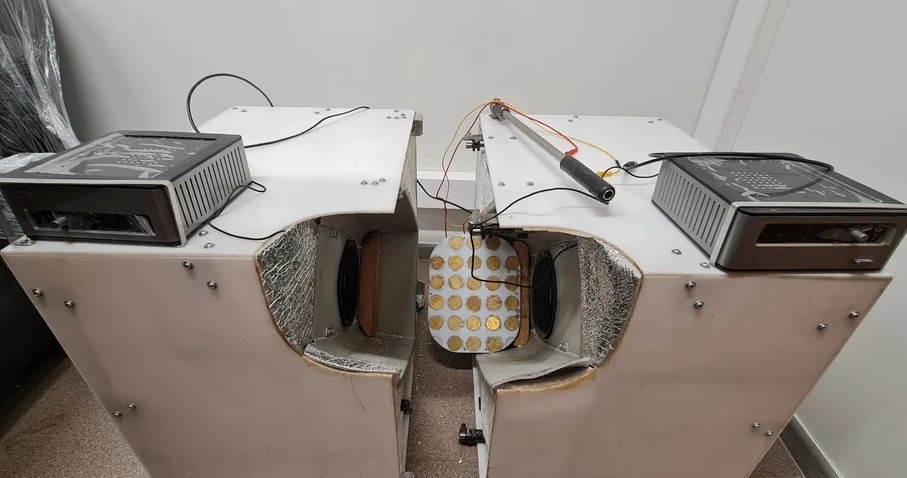Ultrasound Device Non-Invasively Improves Blood Circulation in Lower Limbs
Posted on 09 Nov 2024
Impaired blood circulation in the lower limbs is a common health issue among the elderly and is a significant complication of diabetes, often referred to as diabetic foot. This condition arises due to impaired tissue circulation and progressive neuropathy, causing foot tissues to become insensitive and unable to respond appropriately to trauma. As a result, patients may experience progressive ulceration, wound infection, tissue necrosis, and ultimately, amputation. With limited options for pharmacological treatment, alternative and particularly non-invasive therapies, such as ultrasound energy, are gaining importance. Researchers have now created an ultrasonic foot stimulation device that can non-invasively enhance blood circulation in the lower limbs.
This innovative device was developed through collaboration between scientists from the Kaunas University of Technology (KTU, Kaunas, Lithuania) and the Lithuanian University of Health Sciences (LSMU, Kaunas, Lithuania). Ultrasound has recently found widespread application across various medical fields as a therapeutic method. It can affect diverse body tissues and structures, including bones, skin, muscles, and biological fluids like blood. The application of ultrasound can alleviate pain, reduce spasms and inflammation, and stimulate blood flow. Additionally, it can activate central blood flow in the body's main blood vessels, closer to the heart and lungs, through the retrograde neurogenic pathway, broadening its therapeutic potential.

The developed device employs specific piezoelectric elements to produce a broad spectrum of acoustic ultrasound waves in response to an electrical signal. By selecting the appropriate parameters, the ultrasound is transmitted to the foot tissues, stimulating blood flow throughout the leg. The vibrations caused by electric current passing through the elements generate acoustic waves that penetrate the skin and reach deeper tissues, creating vibrations that enhance the tone of blood vessel walls. This process improves blood flow in superficial tissues and modulates the activity of blood-forming components, including erythrocytes, leukocytes, and thrombocytes. Consequently, it regulates thrombogenesis, immune response, and inflammatory processes, all vital for maintaining normal vascular and tissue function. Furthermore, ultrasound waves can influence nerve structures since all blood vessels are innervated, thus activating vascular tone across a broad tissue area.
It is important to note that the therapeutic effects of ultrasound depend on physical parameters such as wave frequency, power, and intensity. The newly developed device utilizes low-frequency ultrasound, operating in a non-contact and non-thermal manner to minimize potential adverse effects. The researchers believe that, upon creating a commercial prototype, this device could significantly transform medical practice in rehabilitation hospitals, preventive medicine clinics, and nursing facilities. Its portability, safety, and capability to address a wide range of lower extremity circulatory disorders position it as a promising tool for the future. The device can also be customized for individual use through appropriate software modifications, making it beneficial for patients with diabetes and other peripheral circulatory disorders, as well as for older adults experiencing chronic vascular dysfunction. Additionally, with the right parameters, ultrasound may facilitate the targeted delivery of chemotherapeutic drugs, reducing overall toxic effects on the body.














